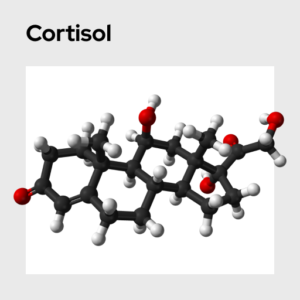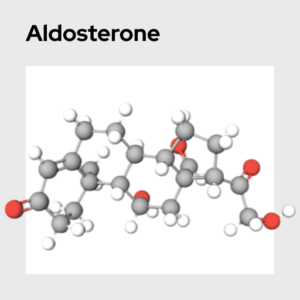Alpha-amylase
Alpha-amylase is a digestive enzyme that increases in response to acute stress. It is frequently used as a salivary measure of sympathetic nervous system activity.
Name: Alpha-amylase
Category: Stress/Affect and Arousal
Type of Test: Saliva
Salivary alpha-amylase (α-amylase, α-1,4-α-d-glucan 4-glucanohydrolase, or sAA) is a digestive enzyme found in saliva. It plays an important role in the breakdown of carbohydrates into glucose in the oral cavity, which is then used to synthesize ATP. Moreover, it also possesses antibacterial properties in the oral cavity and may play a role in maintaining periodontal health.
Due its role in digestion of carbohydrates, levels of salivary alpha-amylase are higher close to mealtimes than in-between meals. Because levels of sAA increase in response to sympathetic nervous system (SNS) activity (via the acinar cells), sAA has become a valuable, non-invasive biomarker for the activation of the SNS that can be easily quantified using saliva. Salivary α-amylase exhibits circadian rhythmicity, with levels decreasing within 60 minutes after waking and subsequently increasing during the course of the day.
Nagy, T., Lien, R. V., Willemsen, G., Proctor, G., Efting, M., Fülöp, M., . . . Bosch, J. A. (2015). A fluid response: Alpha-amylase reactions to acute laboratory stress are related to sample timing and saliva flow rate. Biological Psychology, 109, 111-119. https://doi.org/10.1016/j.biopsycho.2015.04.012
Nater, U., & Rohleder, N. (2009). Salivary alpha-amylase as a non-invasive biomarker for the sympathetic nervous system: Current state of research. Psychoneuroendocrinology, 34, 486-496. https://doi.org/10.1016/j.psyneuen.2009.01.014
Rohleder, N., Wolf, J. M., Maldonado, E. F., & Kirschbaum, C. (2006). The psychosocial stress-induced increase in salivary alpha-amylase is independent of saliva flow rate. Psychophysiology, 43, 645-652. https://doi.org/10.1111/j.1469-8986.2006.00457.






